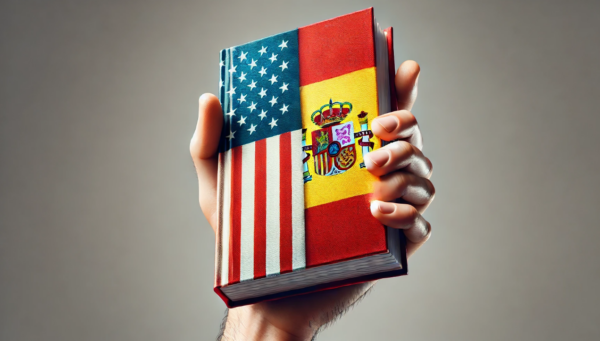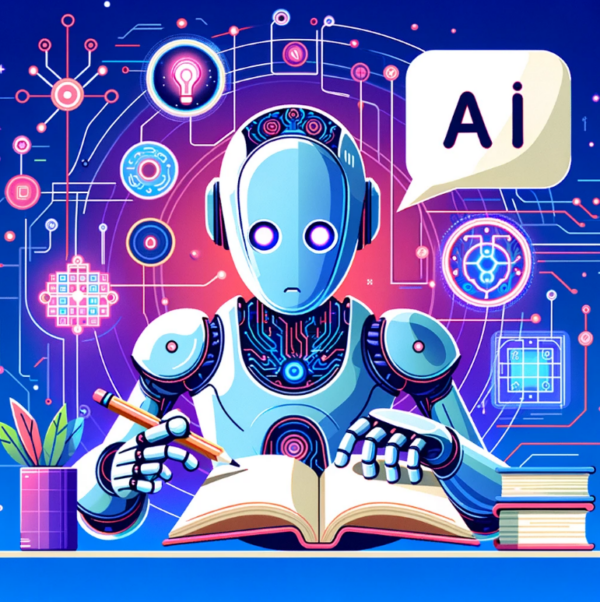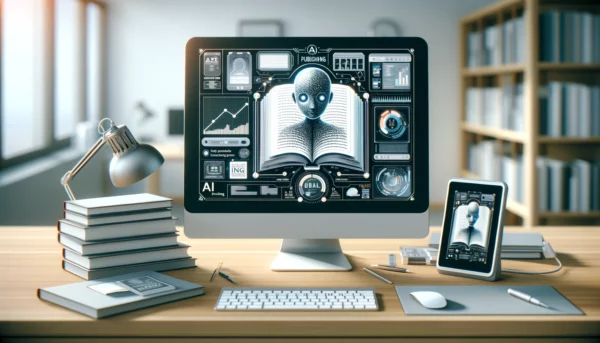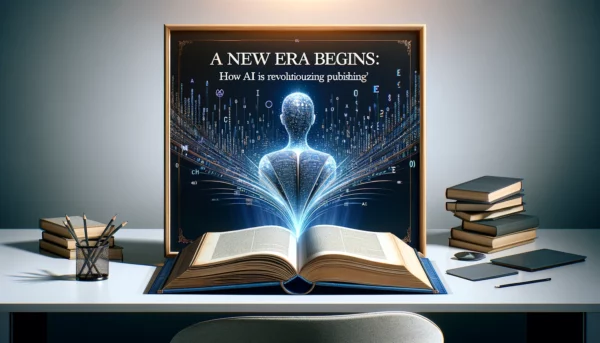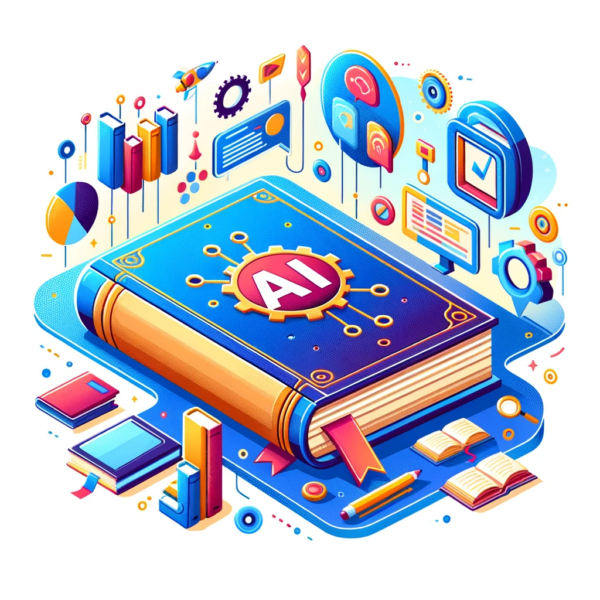In the rapidly evolving landscape of digital content, artificial intelligence (AI) has emerged as a transformative force, reshaping how content is created, distributed, and consumed. However, it’s crucial to explore the limitations of AI in content creation, as AI’s footprint in the creative domain expands at an unprecedented pace.
From generating written articles and crafting social media posts to creating music and producing video content, AI’s footprint in the creative domain is expanding at an unprecedented pace.
These advancements are not just about efficiency; they’re redefining the very nature of creativity and challenging our understanding of what it means to be creative.
AI-generated content marks a significant shift from traditional methods of content creation. Utilizing algorithms and machine learning, AI tools can analyze vast amounts of data, identify patterns, and generate content that aligns with specific styles, themes, or formats.
This capability presents exciting opportunities, such as automating routine aspects of content production, offering personalized content at scale, and even generating new, innovative forms of expression.
However, it’s essential to recognize that this technological marvel is not without its limitations and challenges.
The purpose of this article is to explore the boundaries of AI-generated content and the implications they carry for the future of content creation.
We will delve into the limitations of AI in understanding and replicating the nuanced, often subjective nature of human creativity.
By examining the strengths and weaknesses of AI in this context, we can better appreciate the value of human creativity and insight in complementing and guiding AI’s capabilities.

Understanding AI Writing Tools and AI Generated Content
AI-generated content refers to any piece of content—be it text, images, music, video, or interactive media—created with the assistance of artificial intelligence technologies.
At its core, this process involves the use of algorithms and machine learning models to analyze existing content and generate new material that is similar in style, tone, or structure.
These AI systems can learn from a vast dataset of human-created content, discerning patterns, styles, and techniques, and then apply this learning to create AI generated content that is often indistinguishable from human-generated work.
The essence of AI-generated content lies in its ability to mimic human creativity while operating at a scale and speed unattainable by humans.
However, it’s crucial to note that AI does not “create” in the human sense; it replicates and remixes based on its programming and the data it has been trained on.
This means that while AI generated content can feel authentic, it often lacks the innate creativity and emotional depth that many human writers and creators bring to their work.
Your Publishing Journey Awaits – Start NowTypes of Content That AI Can Generate
Textual Content
AI is widely used in generating written content. This includes news articles, blog posts, marketing copy, and even poetry or fiction.
AI writing tools like Chat GPT have shown remarkable capabilities in creating coherent, contextually relevant, and sometimes creative text.
Visual Content
AI can generate images and art, including graphic designs, digital art, and even realistic photographs or simulations.
Tools like DALL-E and DeepArt utilize advanced algorithms to create visuals that are both innovative and aesthetically pleasing.
Audio and Music
AI systems can compose music and generate audio content, ranging from background music for videos to complete musical compositions.
These systems analyze patterns in music theory and composition to create new pieces in various genres.
Video Content
AI can be used to generate video content, which includes creating visual effects, synthesizing video clips, and even generating deepfakes.
This technology is particularly useful in the fields of film-making and video advertising.
Interactive Media
In the realm of gaming and virtual experiences, AI can generate dynamic and responsive environments. This includes creating non-player character (NPC) behaviors, procedural content generation, and interactive narratives.
Personalized Content
One of the most significant applications of AI in content generation is personalization. AI can tailor content to individual preferences and behaviors, seen in personalized news feeds, product recommendations, and search engines and targeted advertising.
Each of these types of content showcases the versatility and capability of AI in the realm of content creation.
However, as we delve deeper into the implications of these technologies, it becomes evident that while AI generate and create content can mimic many aspects of human creativity, it also has distinct limitations and raises crucial ethical and practical considerations.
Limitations of AI in Content Creation: An Overview
Despite its impressive capabilities, AI encounters significant limitations that impact its effectiveness and applicability. Understanding these limitations is essential for discerning the appropriate roles and boundaries for AI in the creative writing process itself.
Lack of Original Creativity
AI operates by learning from existing data, meaning it essentially remixes and repurposes what it has been fed. This process lacks the spontaneous, original creativity inherent to human creators. AI can imitate styles and patterns but struggles to produce truly novel ideas or think outside the data it has been trained on.
Difficulty with Contextual and Nuanced Understanding
AI often struggles with understanding context and nuance, especially in language. It can misinterpret idioms, cultural references, or subtle emotional cues using AI names, leading to content that may be technically correct but contextually inappropriate or tone-deaf.
Ethical and Moral Considerations
AI-generated content raises ethical questions concerning authenticity, plagiarism, and the potential for misuse, like creating deepfakes or spreading misinformation. The inability of AI to discern ethical boundaries poses significant challenges.
Dependence on Data Quality
The quality of AI-generated content is only as good as the data it is trained on. Biases in training data can lead to biased or skewed output, perpetuating stereotypes or inaccuracies.
Lack of Emotional Intelligence
AI tools lack emotional intelligence, which is critical in content creation for resonating with human emotions and experiences. While AI can mimic emotional expressions, it doesn’t truly understand or feel them, which can lead to a lack of depth in the content it produces.
Intellectual Property Concerns
The use of AI generate content blurs the lines of intellectual property rights. It’s often unclear who owns the content: the creator of the AI, the user of the AI, or perhaps no one at all.
Scalability vs. Quality Balance
While AI excels in generating content at scale, this often comes at the cost of quality or uniqueness. The mass-produced nature of AI content can lead to a homogenization of content, where everything starts to look and sound similar.
Reliability and Accuracy Issues in AI-Generated Information
One of the significant challenges with AI-generated content is ensuring its factual accuracy. AI systems, especially those dealing with large volumes of data or real-time information, can inadvertently propagate inaccuracies or outdated information. This is particularly concerning in fields like journalism or educational content, where accuracy is paramount.
The Potential for Misinformation
The ease and speed with which AI can generate content also come with the risk of spreading misinformation.
Without proper checks and balances, AI-generated content could contribute to the dissemination of false information, either unintentionally due to training on inaccurate data sources or intentionally, as in the case of deepfakes or propaganda.
This risk highlights the need for robust verification processes and ethical guidelines in the deployment of AI for content creation.
The Future of AI in Content Creation
The future of AI in content creation holds both immense promise and significant challenges. As AI technologies continue to evolve, we can expect them to become more sophisticated in their capabilities, potentially offering even more advanced forms of content generation.
The integration of AI in content creation is anticipated to become more seamless and intuitive, enabling creators to use these tools to enhance their work rather than merely automate it.
We might see AI systems that can better understand and replicate complex human emotions and cultural nuances, leading to more authentic and resonant content.
Your Publishing Journey Awaits – Start NowPotential Advancements and Continuing Limitations
Future advancements may include more refined natural language processing capabilities, improved contextual understanding, and enhanced personalization in content generation.
However, the inherent limitations of AI, particularly regarding original creativity, ethical considerations, and emotional depth, are likely to persist.
As AI tools become more advanced, there will also be an increased need for governance frameworks to manage the ethical and societal implications of AI-generated content.
The Potential of Combining Human Creativity with AI Efficiency
The most promising avenue for the future of content creation lies in the synergy between human creativity and AI efficiency. By combining the unique strengths of both, we can overcome the limitations inherent in each.
Humans bring creativity, emotional intelligence, and ethical judgment to the table, while AI offers speed, scalability, and the ability to process vast amounts of data.
This collaboration can lead to more innovative, diverse, and high-quality content that neither humans nor AI could achieve alone.
Successful Examples of Human-AI Collaboration in Content Creation
There are already successful examples of this collaborative approach in various fields. In journalism, AI tools are used for data analysis and initial reporting, allowing human journalists to focus on more in-depth storytelling and analysis.
In music and art, AI can provide new tools for human creators to experiment with, leading to innovative forms of expression that blend AI-generated patterns with human artistic vision.
In film, AI is used for tasks like script analysis and editing, enabling filmmakers to enhance their storytelling capabilities.
These collaborations highlight the potential of AI as a tool that augments human creativity rather than replacing it, paving the way for a future where AI and humans work in tandem to push the boundaries of content creation.
Harmonizing Human Ingenuity with AI: The Future of Content Creation
The exploration of AI’s role in content creation reveals a landscape filled with potential and pitfalls. The challenges of ensuring authenticity, maintaining ethical standards, and preserving the unique elements of human creativity are as significant as the opportunities AI presents for efficiency and innovation. As AI technologies continue to evolve, the creative world must navigate these challenges with a balanced approach, ensuring that AI serves as a tool for enhancing human creativity, not replacing it.

